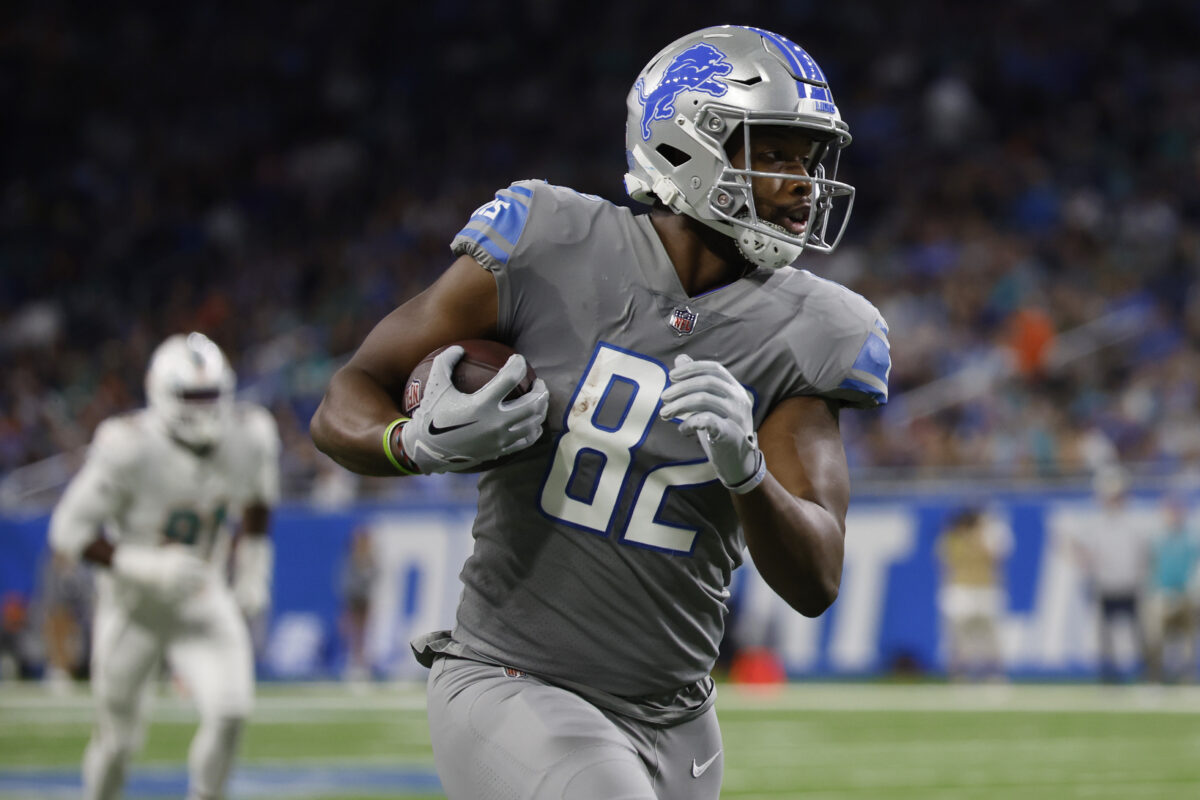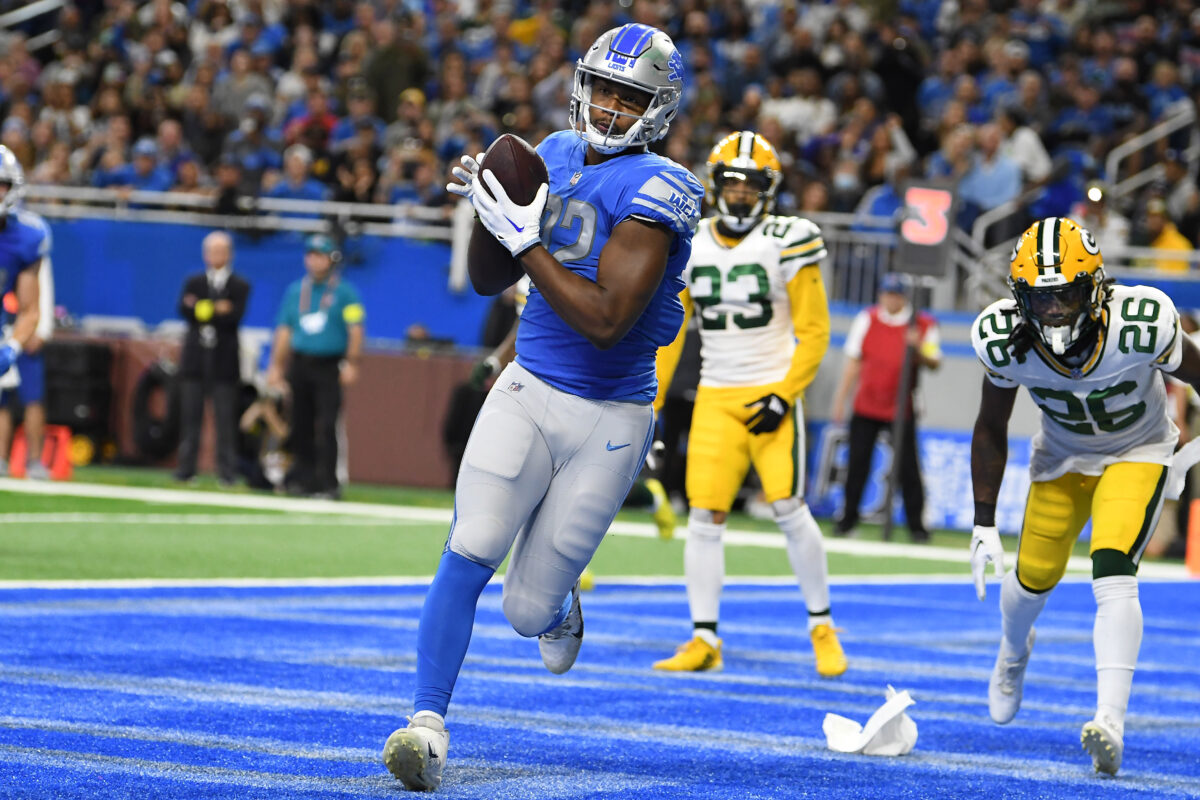[anyclip pubname=”2103″ widgetname=”0016M00002U0B1kQAF_M8036″]
Jason Cabinda is entering his fifth season as the Detroit Lions’ fullback, but the team’s tight end group could make his role obsolete.
Cabinda, a linebacker-turned-fullback, has referred to himself as a “Superback” capable of playing running back, tight end, and receiver. While his positional versatility should make him valuable, his usage on offense has been on the decline over the years.
Cabinda only appeared in eight games in 2022 due to injuries, and did not see much action on the field during that time. He had one carry for four yards and one reception for a gain of five. The key issue here that could cause him to lose his roster spot is his drops. He dropped two passes during the game against the Giants.
So who on the roster could replace him?
Detroit has several tight ends who could play the role that Cabinda does on offense, and likely do a better job of it. Given the nature of the position, the player would need to be an efficient blocker in the run and pass games while also being able to run routes and carry the ball.
That’s where depth players like James Mitchell and Derrick Deese can make their impact.
At Virginia Tech, Mitchell was used everywhere on the field, and took plenty of snaps in the backfield at the H-back position. He is a versatile tight end who can catch as well as he can block. He was also an efficient goal-line back, carrying the ball seven times for nine yards and five touchdowns.
Watch James Mitchell (TE, Virginia Tech #82) stay with this block.
It helps a lot that Khalil Herbert is so patient as a runner, but this teach tape for why you sustain blocks as long as you can. Pays off in the form of a TD here. pic.twitter.com/NIINcwoAZ1
— EJ Snyder (@FootballEJ) March 27, 2022
Deese doesn’t have the rushing stats that Mitchell does, but he was used in a similar way at San Jose State and has taken reps in the fullback role during practices last summer. He is known primarily as a blocking tight end but has the hands to contribute as a receiver.
The main thing that Cabinda still has going for him is his ability and willingness to play special teams. His experience as a linebacker in college and the NFL is clear when he makes a tackle on kickoff and punt coverage, and his skills as a blocker have been crucial on kick and punt returns.
That being said, Mitchell and Deese have much more experience playing on offense and could save the team a roster spot if they decide to forego a true fullback. Instead, they could be active as the third or fourth tight end on game days and open up the playbook a little bit more.










